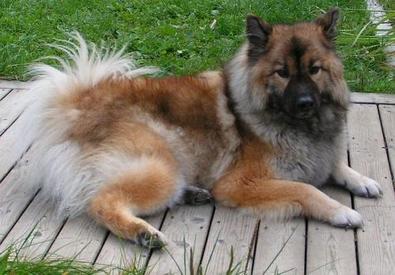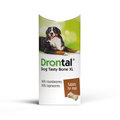
The Eurasier originates from...
A relatively modern breed, the Eurasier incorporates both Asian and European heritage, believed to have arisen in Germany in 1960 from the German breeder Julius Wipfel. The breed originates from crossing between the Chow Chow and the Wolfspitz, with an input of male Samoyed blood — the breed was originally known as the 'Wolf Chow' in line with its parentage. Primarily bred as a companion dog and protector, while being popular in Germany and Switzerland, the Eurasier dog is uncommonly seen in the United States. Falling within the non-sporting, 'working' branch of canines, the breed shares its classification with the Dalmatian, Bulldog, Akita, and Poodle.
The Eurasier is characterised by...
A medium-sized spitz, the Eurasier dog has a typically wedged-shaped head in line with its forebears, a feathered tail, a blue-black, pink, or spotted tongue, proportionate build, and a thick coat in colour variations of black, fawn, wolf-grey, red, black, and tan. Not known to bark loudly or incessantly, the Eurasia is an ineffective guard dog, but is peaceful and even-tempered within the home. Enthusiastic in exercise and play, docile, affectionate, and comfortable when faced with new people and situations, the Eurasier is often utilised as a therapy dog.
The average Eurasier...
Combining the best qualities of its forebears, the Eurasier dog is intelligent, alert, confident, and sweet-natured, while being compatible with children and other household pets. When unprovoked, the Eurasier is gentle and loving, while acting fearlessly to defend its family if potential threat is perceived. The average dog will weigh 18-26kg, with a life expectancy of 10-12 years when shown appropriate care, although it is not uncommon to outlive this expectancy.
Weaknesses...
Although generally healthy and long-lived, the Eurasier dog is known to suffer with a variety of hereditary diseases including hip and elbow dysplasia, patellar luxation, as well as an uncomfortable eye complaint known as Distichiasis. Due to its relatively small proportions, the Eurasier may be prone to 'small-dog syndrome' and associated behavioural problems, especially when left alone for long periods of time and easy weight gain.
Browse more breed facts and information or take a look at our calming and behaviour products, joint care, and dog grooming products.








From Cornwall, United Kingdom
The most amazing companion dog, but not too good with people outside of her “pack”